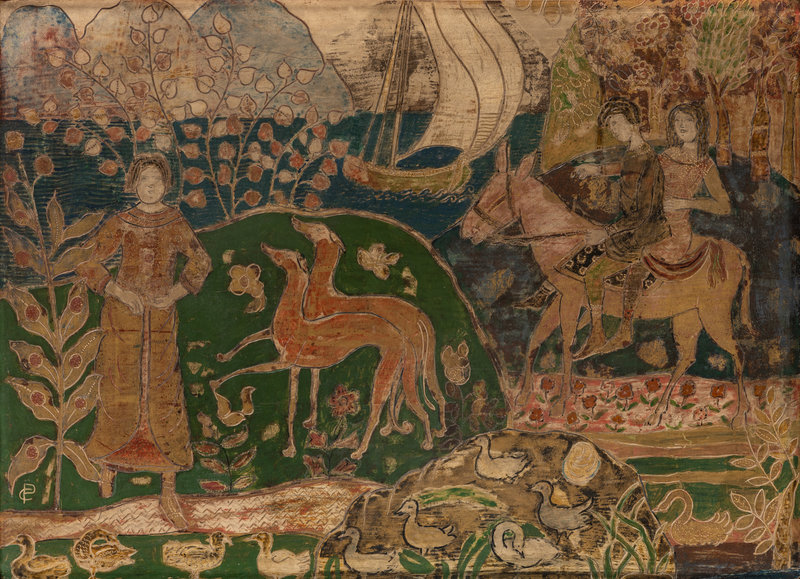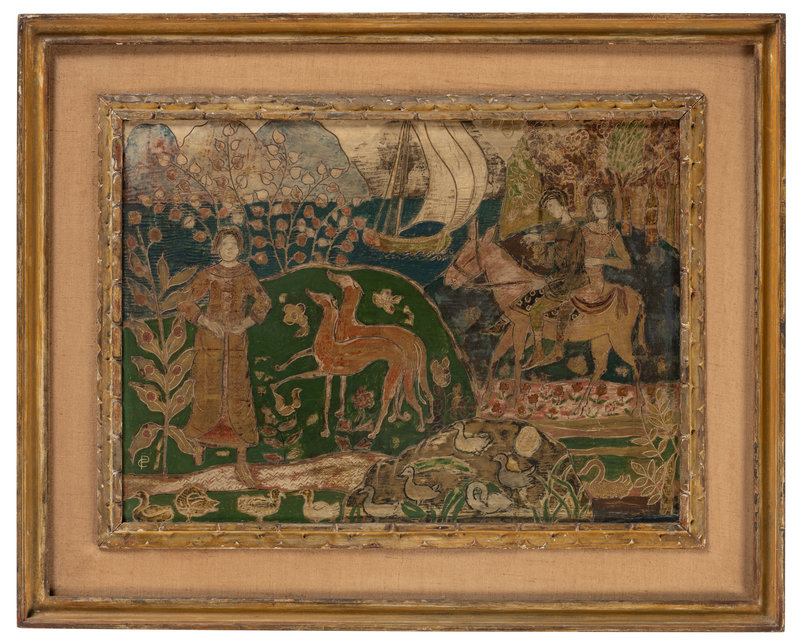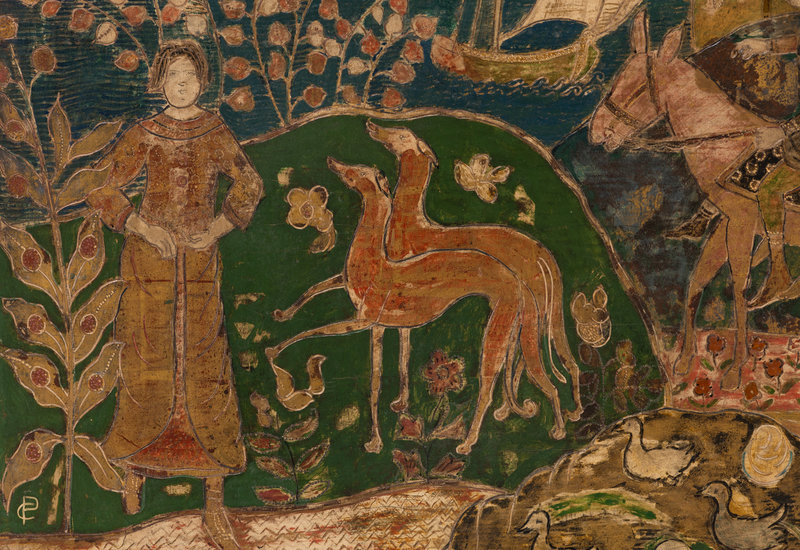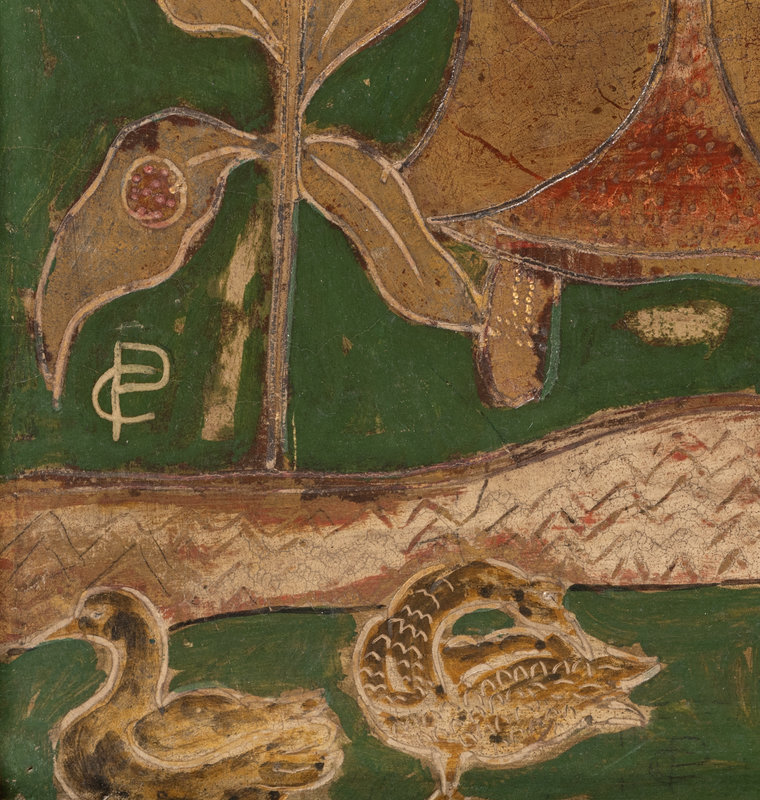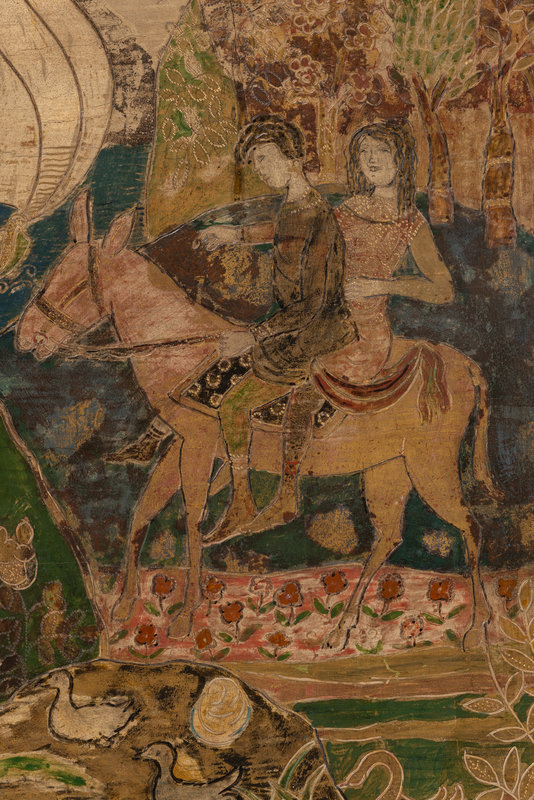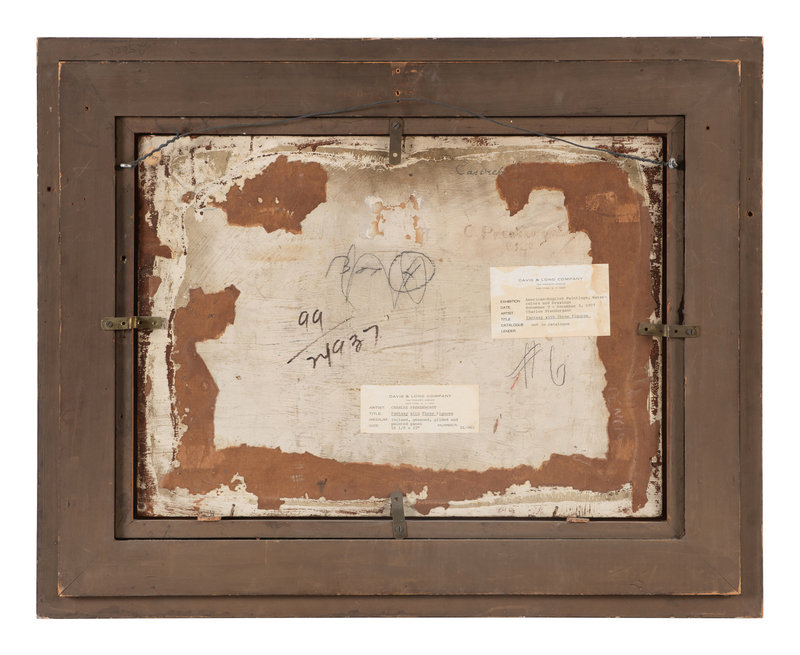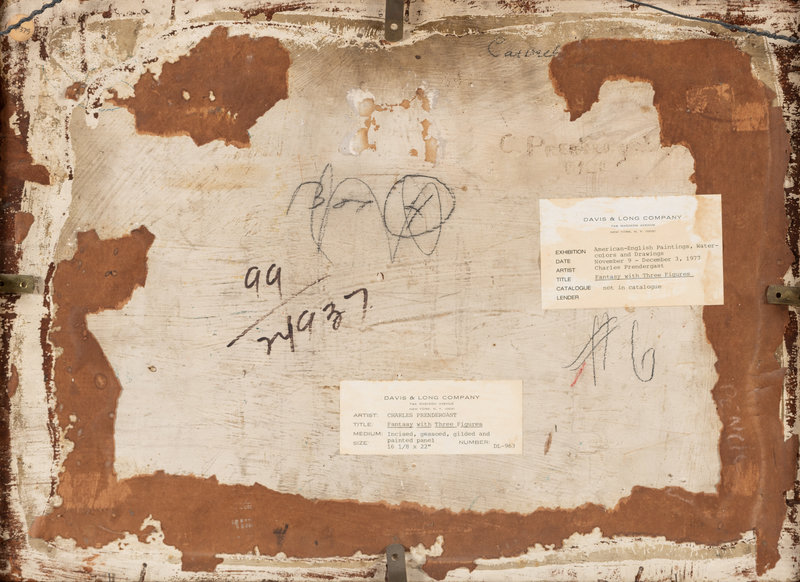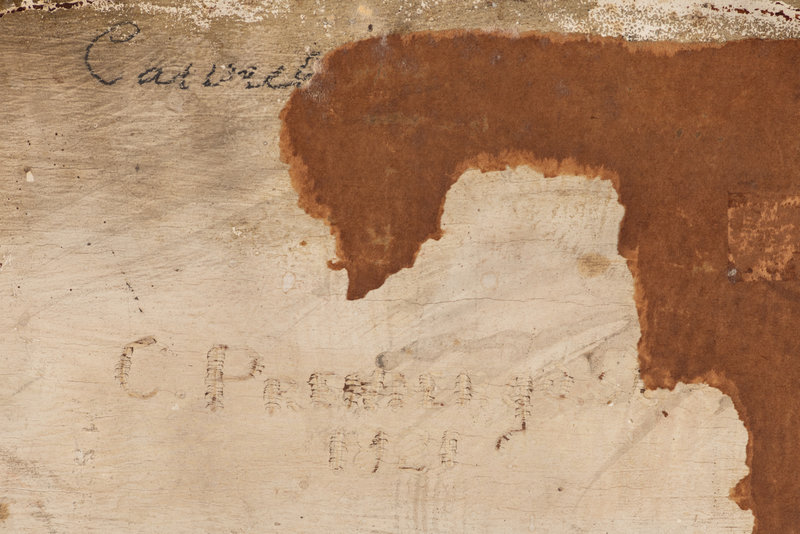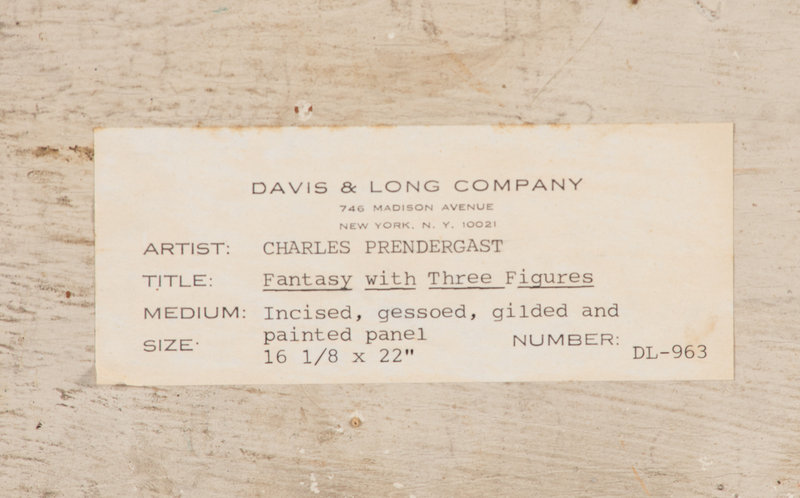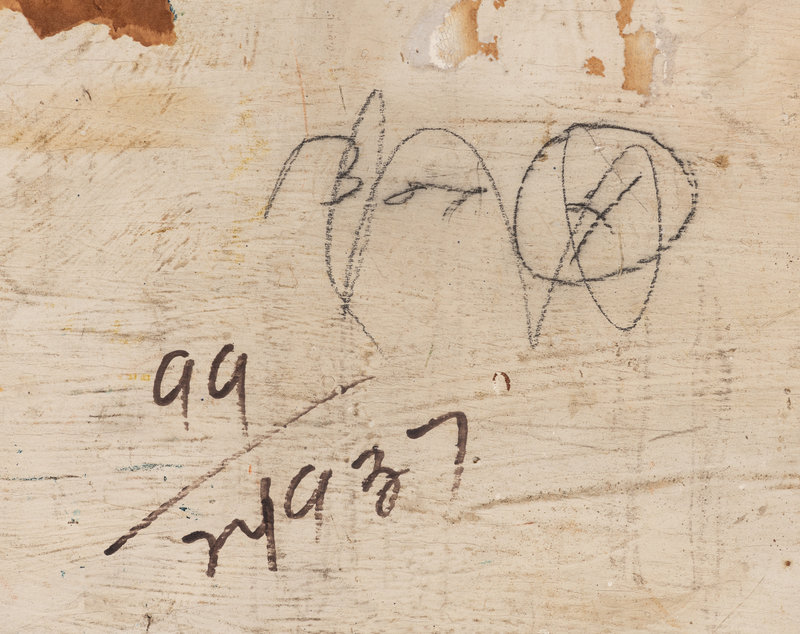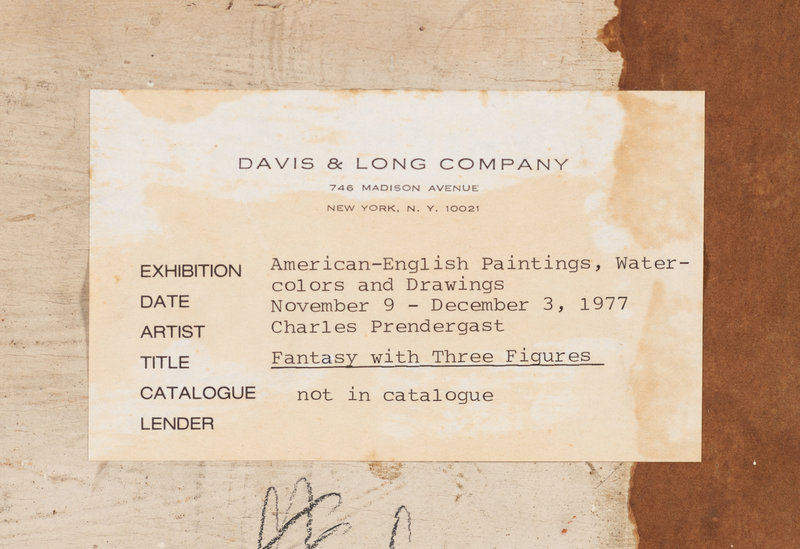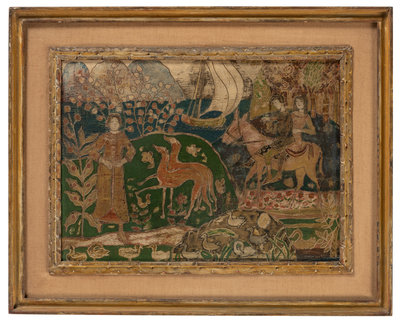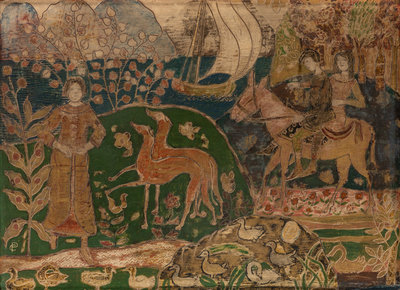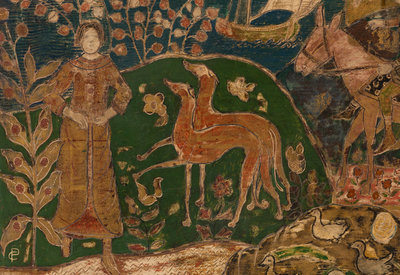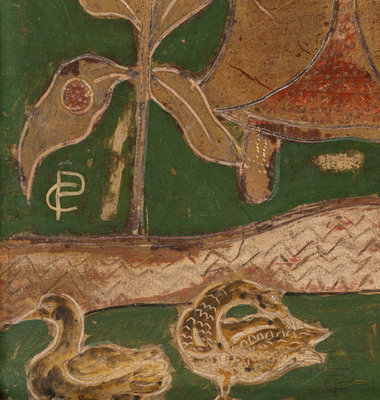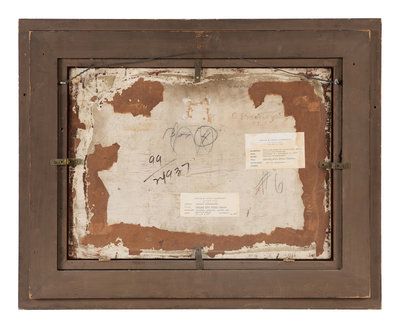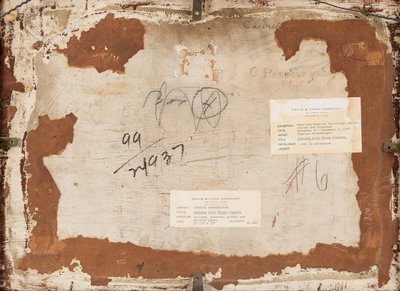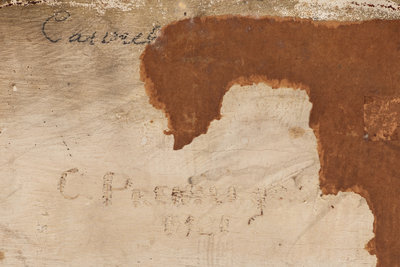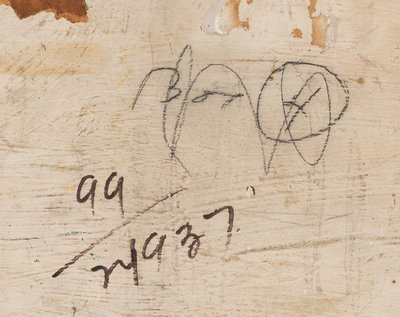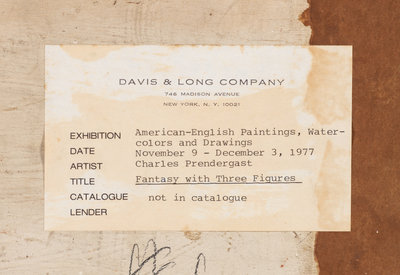Bears a frame carved by the Artist
Provenance:
Joseph Brummer, New York, by 1922
Mrs. B. Cohane
Hirschl & Adler Galleries, New York, 1962
Fletcher
Davis & Long, New York
Acquired from the above by the present owners, 1977
Exhibited:
(possibly) New York, Joseph Brummer, Exhibition of Works by Maurice B. Prendergast and Charles E. Prendergast, April 4 - April 23, 1921
New York, Davis & Long, American-English: Paintings, Watercolors and Drawings, November 9 - December 3, 1977 (not included in catalogue)
Literature:
"Her Vagaries," International Studio, May 1921, p. 77, illus.
Carol Clark, Nancy Mowll Mathews, and Gwendolyn Owens, Maurice Brazil Prendergast, Charles Prendergast: a catalogue raisonné, Williamstown, Massachusetts, 1990, no. 2254, p. 679, illus.
Lot note:
Born in Newfoundland and raised in Boston, the artist-craftsman Charles Prendergast was close to and often collaborated with his older brother, the well-known post-impressionist Maurice Brazil Prendergast (1858–1924). After working from a young age, first as a traveling salesman and then as a woodworker, Charles established a frame-making career in 1894. Spurning commercial frame-making methods, he embraced an Arts and Crafts ethic, producing hand-crafted, gilded frames carved in low relief, with original designs based on pattern books and nature. On a trip to Italy in 1911, he visited churches and museums, where he was drawn to the gold—symbolic of heaven and sacred events—in Trecento and Quattrocento paintings and cassone. Shortly after his return, he created his first panel paintings. Influenced by a technical manual (c. 1400) by the Florentine artist Cennino Cennini, he developed a distinctive method, consisting of cutting into damp gesso, which he painted, incised, gilded, and burnished. Another influence was Japanning (a Western imitation of oriental lacquer work), for which Prendergast developed his own variation, building his forms with additional plaster coatings, their roughness removed with sandpaper and pumice stone. Although he based his first panels on religious prototypes, he soon broadened his sources to encompass many artistic traditions, including Egyptian, Persian, Chinese, Roman, Etruscan, Hindu, and Coptic. He studied these sources on visits to museums in Boston as well as in New York, where he and Maurice moved together in 1914.
Signed and dated on its verso, “C. PRENDERgast / 1921,” Fantasy with Three Figures / Allegory belongs to the first of three phases in Prendergast’s art, which he named the “Celestial” or “Oriental” (the later phases were the “Transitional” and the “Modern”). Demonstrating a lavish and glistening use of gold leaf, the image depicts the kind of idyllic Arcadian setting and enigmatic allegorical subject matter that characterizes this phase. The mythical place of abundance with blossoming trees, floating rosettes, a flower garden, wildlife (waterfowl and two quadrupeds in overlapping profile, with the S-curves of greyhounds) has seemingly been reached by an ancient sailing vessel (at the apex of the composition), while mountains on the far shore are in the distance. The three figures in the scene—a woman stepping forward and a man and woman riding sidesaddle on a mule—wear Renaissance attire but their simplified features give them a distinctly modern aspect. Evoking the escapist tradition of Watteau’s voyages to Cythera (1717) and medieval mille-fleur tapestries at the Cloisters, the image is a modified, cropped, and more frontal representation of the scene depicted in Prendergast’s somewhat larger panel, Figures and Mules (or Greyhounds), c. 1921 (Barnes Foundation, Philadelphia), which was purchased by Albert C. Barnes (1872–1951) from the March 1921 Society of Independent Artists Exhibition. In the present work, the burnished gold leaf, set against the dark blues and greens of the land and water, is far more pronounced, while Prendergast monumentalized the imagery within a condensed and cohesive design, which he tied together with a hand-carved baguette-style frame, patterned with a loose version of the classical egg-and-dart.
Prendergast completed the present painting by May 1921, when it was illustrated in an article in International Studio, with a caption that reads “Carved Wood Panel, courtesy Joseph Brummer.” The Hungarian-born Brummer (1883–1947)—who studied with Rodin and Matisse and previously ran a prestigious Paris gallery with his brother Ernest, specializing in medieval art—was the work’s first owner. It can be presumed he included it among the eight carved wood panels by Prendergast included in the exhibition of his work, and that of Maurice, held in April 1921, which was the inaugural show at his New York gallery. The Brooklyn Eagle reported: “In choosing the Prendergasts for his opening exhibition, Mr. Brummer has shown both taste and judgment. The paintings show off the beauty of his galleries and are an excellent foil to the antiquities which Mr. Brummer has in the rooms on the ground floor, wonders from Greece, from Egypt, and gothic works from France” (April 10, 1921, p. 40). This would certainly have been an appropriate context for Charles’s work. A review of the show in the New York Evening Herald commented on Prendergast’s “incised and illuminated wood panels [which] show a facile command of gold leaf, relying on an underlay of red in lowering the glare” (April 20, 1921, p. 7).
Lisa N. Peters, PhD
